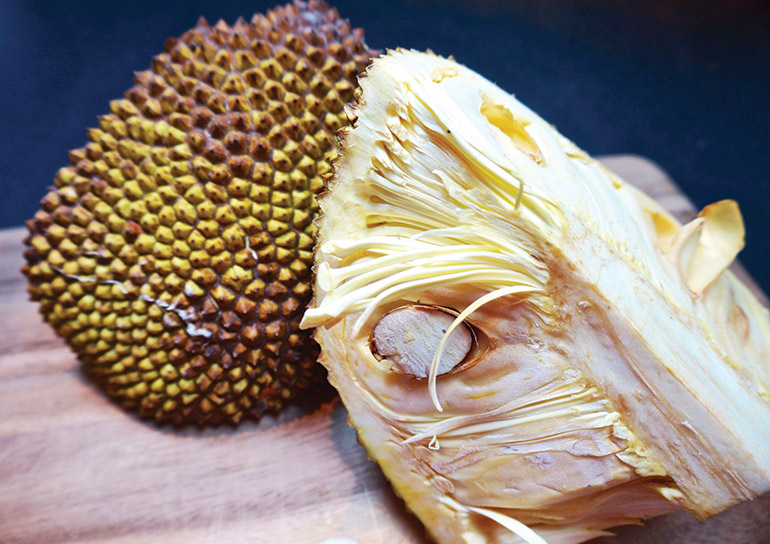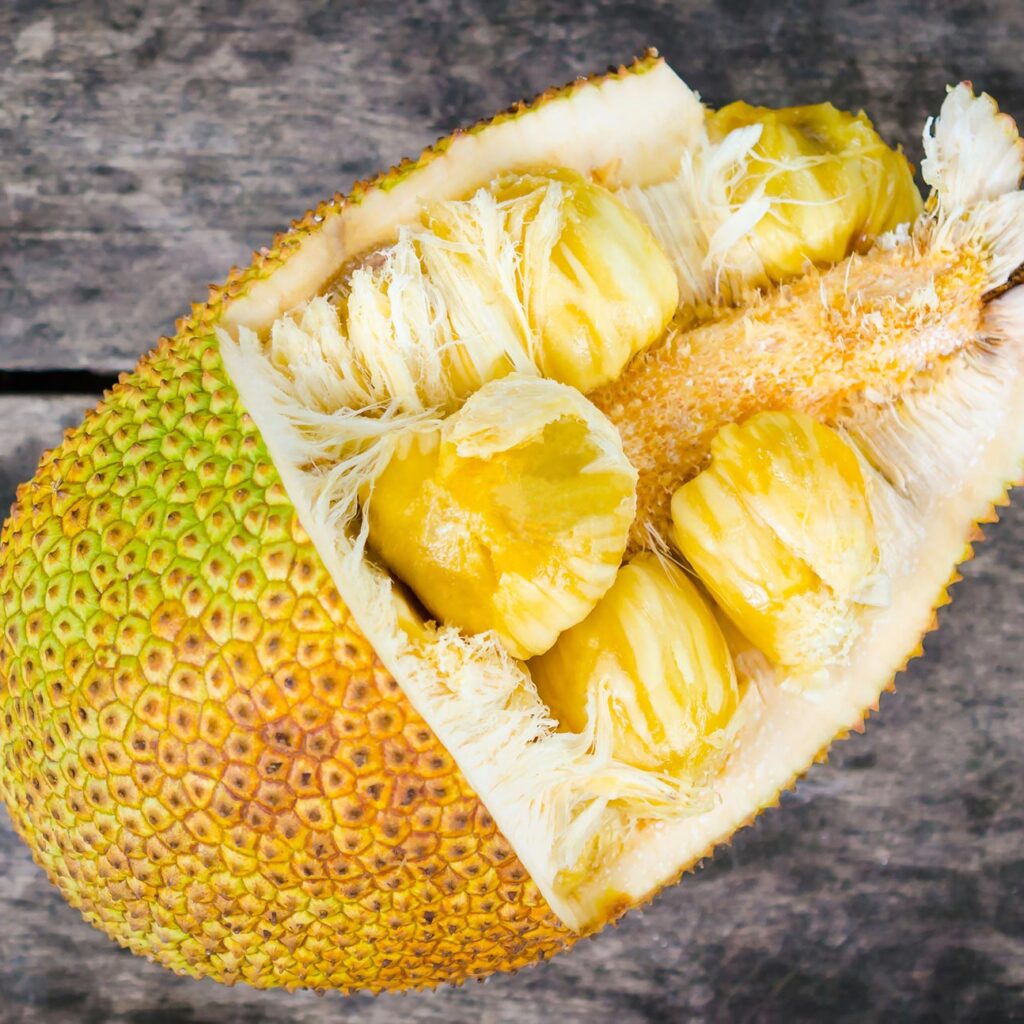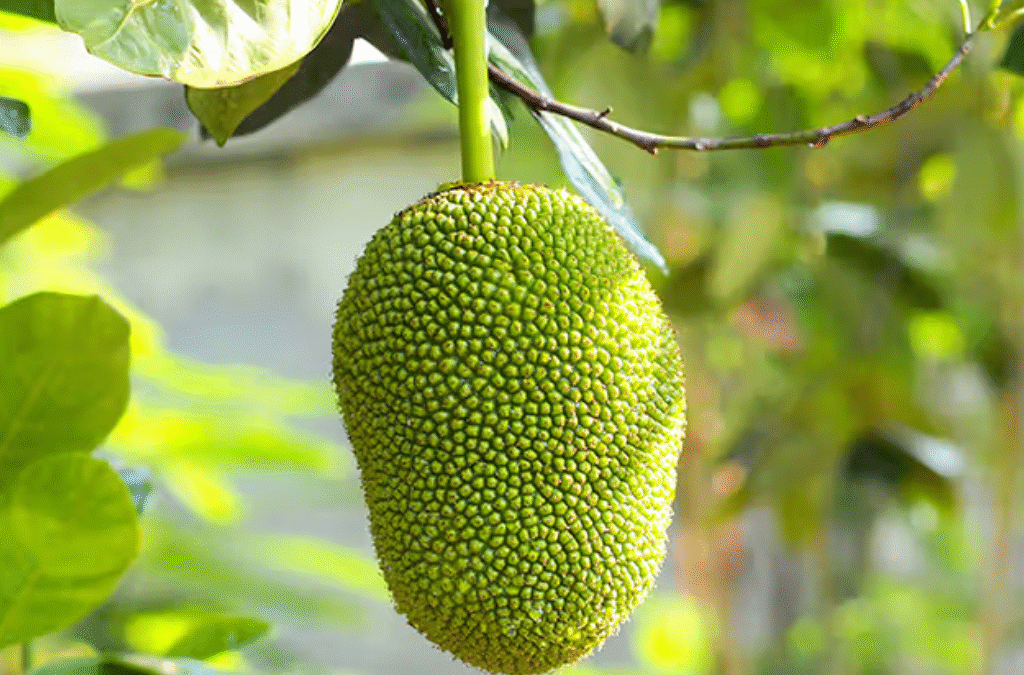In recent years, jackfruit—once considered a humble, underutilized tropical fruit—has emerged as a global sensation in the export market. Known for its massive size, spiky exterior, and versatile interior, jackfruit is now enjoying increasing popularity in North America, Europe, and parts of East Asia, not just as a fruit but as a meat substitute, superfood, and sustainable crop. This article explores the journey of jackfruit from traditional farming regions to the shelves of international supermarkets, shedding light on production trends, global demand, nutritional value, challenges, and future prospects.
Origins and Traditional Uses

Jackfruit (Artocarpus heterophyllus) is native to South and Southeast Asia and has been cultivated for centuries in countries such as India, Bangladesh, Thailand, Sri Lanka, and Indonesia. The fruit holds significant cultural and culinary value in these regions, where it is used in both raw and ripe forms in dishes ranging from curries and stews to sweets and snacks.
In India, particularly in the states of Kerala, Tamil Nadu, and Karnataka, jackfruit has been a staple ingredient during summer months. It’s traditionally valued for its high energy content, long shelf life (when dried), and versatility—used as fruit, vegetable, or seed.
However, until the 2010s, jackfruit was largely underappreciated on a global scale, with much of it left to waste due to lack of organized supply chains and poor post-harvest management.
Nutritional and Environmental Benefits

The rise of jackfruit as a global export commodity can largely be attributed to growing awareness of its nutritional and ecological value.
Nutritional Profile:
Jackfruit is rich in:
- Dietary fiber
- Vitamin C
- Potassium
- Magnesium
- Antioxidants
- Low in calories and fat
Young (unripe) jackfruit has a fibrous texture that closely resembles pulled pork or shredded chicken, making it a popular meat substitute in vegan and vegetarian dishes. Ripe jackfruit, on the other hand, is sweet and aromatic, with flavor notes resembling mango and banana.
Environmental Advantages:
Jackfruit trees are highly resilient. They:
- Thrive in hot climates and tolerate drought
- Require minimal care and fertilizers
- Are relatively pest-resistant
- Have a long productive life (up to 60 years)
These characteristics make jackfruit a climate-resilient crop, ideal for sustainable agriculture, especially in regions facing unpredictable weather patterns due to climate change.
Growing Global Demand

As health-conscious consumers seek more plant-based and sustainable food options, jackfruit has become a trendy alternative. From meatless burgers to tacos and pulled “pork” sandwiches, jackfruit is now a key ingredient in many plant-based menus across the West.
Key Export Markets:
- United States: Jackfruit is increasingly found in health stores like Whole Foods, Trader Joe’s, and even Walmart in canned, frozen, and pre-marinated forms.
- Europe: Veganism and vegetarianism are on the rise, especially in the UK and Germany. Jackfruit fits perfectly into this culinary revolution.
- East Asia: Countries like Japan and South Korea are beginning to explore jackfruit for both culinary and cosmetic uses.
In fact, global jackfruit product launches have surged over the last five years, reflecting rising interest in jackfruit-based products such as chips, juices, mock meats, and flour.
Major Exporting Countries

1. India
India is the world’s largest producer of jackfruit. States like Kerala, Tamil Nadu, and Tripura are major hubs. In recent years, India has started organizing jackfruit farming under cooperative and government schemes, helping farmers process and export value-added products.
Kerala declared jackfruit as its official state fruit in 2018, boosting its market value and encouraging structured cultivation. Exporters now send fresh, frozen, and canned jackfruit to the Gulf, US, and European markets.
2. Sri Lanka
Sri Lanka is another key exporter, especially of canned jackfruit and jackfruit curry in brine. The country is leveraging jackfruit as part of its plant-based food export strategy.
3. Thailand and Vietnam
Both countries export a variety of jackfruit products, including vacuum-packed, freeze-dried, and sweetened ripe jackfruit. Thailand has been especially successful in developing ready-to-eat jackfruit snacks for Asian and Western consumers.
4. Bangladesh
Bangladesh, which considers jackfruit its national fruit, is now ramping up its export capabilities. Although traditionally consumed domestically, the country is now seeing potential in supplying global markets through government-backed farming initiatives.
Jackfruit as a Meat Substitute

Perhaps the most influential factor in the rise of jackfruit’s export value is its place in the booming plant-based meat industry.
As more people reduce or eliminate meat from their diets, jackfruit has become a sought-after ingredient due to its:
- Meaty texture
- Mild flavor that absorbs seasoning well
- High fiber and micronutrient content
Brands like The Jackfruit Company, Upton’s Naturals, and Nature’s Charm have built entire product lines around jackfruit-based meat alternatives, showcasing its market potential in frozen meals, meal kits, and restaurant-ready formats.
Challenges to Global Expansion
Despite its popularity, exporting jackfruit comes with its own set of challenges:
1. Short Shelf Life:
Fresh jackfruit is highly perishable, which complicates long-distance transport. Most exporters rely on freezing, canning, or drying to extend shelf life.
2. Lack of Cold Chain Infrastructure:
In many producing countries, cold storage and transportation infrastructure is still underdeveloped, which can lead to post-harvest losses.
3. Labor-Intensive Processing:
Jackfruit is large and difficult to peel and process manually, requiring significant labor for cleaning and preparation. Automation is limited and expensive.
4. Market Education:
While interest is growing, jackfruit is still relatively unknown in many parts of the world. Exporters must invest in marketing, education, and recipe development to familiarize new consumers with the fruit.
Opportunities Ahead
The future of jackfruit as a global export appears promising, especially if supported by the following developments:
1. Value Addition:
Exporting not just raw fruit, but processed and packaged jackfruit products like frozen cubes, curries, chips, or flour allows producers to capture more value and reduce waste.
2. Government Support:
Countries like India and Sri Lanka are offering subsidies, training, and support for jackfruit farmers, especially in rural areas, to tap into export markets.
3. Agro-Processing Innovation:
As technologies for peeling, slicing, freezing, and packaging improve, the ease of processing jackfruit will grow, leading to increased export volumes.
4. Health and Sustainability Trends:
Jackfruit fits perfectly into current global trends:
- Gluten-free
- Vegan
- Non-GMO
- Low carbon footprint
As more consumers prioritize sustainability and health, jackfruit is likely to gain even more traction.
Conclusion
From an underappreciated fruit often left to rot in backyards to a global superfood and vegan meat substitute, jackfruit’s journey has been nothing short of remarkable. Its rise in the international export market is a testament to changing dietary preferences, climate-conscious consumption, and the power of sustainable agriculture.
As challenges in infrastructure and awareness are gradually overcome, jackfruit is poised to become not just a passing trend but a lasting symbol of how traditional crops can shape the future of global food systems.
With its impressive nutritional profile, environmental benefits, and versatility, jackfruit isn’t just growing on trees—it’s growing on the world.





